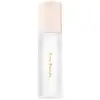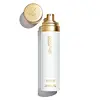What's inside
What's inside
 Key Ingredients
Key Ingredients

 Benefits
Benefits

 Concerns
Concerns

No concerns
 Ingredients Side-by-side
Ingredients Side-by-side

Water
Skin ConditioningCaprylic/Capric Triglyceride
MaskingGlycerin
HumectantDipropylene Glycol
HumectantNiacinamide
Smoothing1,2-Hexanediol
Skin ConditioningButylene Glycol
HumectantPanthenol
Skin ConditioningAllantoin
Skin ConditioningBetaine
HumectantSodium Chloride
MaskingSqualane
EmollientEthylhexylglycerin
Skin ConditioningTrehalose
HumectantSodium Benzoate
MaskingDisodium EDTA
Olea Europaea Fruit Oil
MaskingCitrus Aurantium Bergamia Fruit Oil
MaskingLavandula Angustifolia Oil
MaskingSodium Hyaluronate
HumectantGardenia Florida Fruit Extract
Skin ConditioningNelumbo Nucifera Flower Extract
Skin ConditioningNymphaea Odorata Root Extract
RefreshingCananga Odorata Flower Oil
MaskingCitric Acid
BufferingCitrus Aurantium Dulcis Oil
MaskingCymbopogon Martini Oil
MaskingPelargonium Graveolens Flower Oil
MaskingMichelia Alba Flower Oil
MaskingEugenia Caryophyllus Leaf Oil
MaskingSodium Citrate
BufferingEucalyptus Globulus Leaf Oil
PerfumingJasminum Officinale Oil
MaskingLimonene
PerfumingLinalool
PerfumingWater, Caprylic/Capric Triglyceride, Glycerin, Dipropylene Glycol, Niacinamide, 1,2-Hexanediol, Butylene Glycol, Panthenol, Allantoin, Betaine, Sodium Chloride, Squalane, Ethylhexylglycerin, Trehalose, Sodium Benzoate, Disodium EDTA, Olea Europaea Fruit Oil, Citrus Aurantium Bergamia Fruit Oil, Lavandula Angustifolia Oil, Sodium Hyaluronate, Gardenia Florida Fruit Extract, Nelumbo Nucifera Flower Extract, Nymphaea Odorata Root Extract, Cananga Odorata Flower Oil, Citric Acid, Citrus Aurantium Dulcis Oil, Cymbopogon Martini Oil, Pelargonium Graveolens Flower Oil, Michelia Alba Flower Oil, Eugenia Caryophyllus Leaf Oil, Sodium Citrate, Eucalyptus Globulus Leaf Oil, Jasminum Officinale Oil, Limonene, Linalool
Water
Skin ConditioningAloe Barbadensis Leaf Juice
Skin ConditioningPropanediol
SolventGlycerin
HumectantPentylene Glycol
Skin ConditioningNiacinamide
SmoothingFructooligosaccharides
HumectantSorbitol
HumectantBeta Vulgaris Root Extract
Skin ConditioningBetaine
HumectantPotassium Lactate
BufferingCaprylhydroxamic Acid
Caesalpinia Spinosa Fruit Extract
Skin ProtectingPCA
HumectantSerine
MaskingAlanine
MaskingGlycine
BufferingKappaphycus Alvarezii Extract
Skin ConditioningGlutamic Acid
HumectantLysine Hcl
Skin ConditioningThreonine
Arginine
MaskingProline
Skin ConditioningSodium PCA
HumectantLactic Acid
BufferingSodium Lactate
BufferingWater, Aloe Barbadensis Leaf Juice, Propanediol, Glycerin, Pentylene Glycol, Niacinamide, Fructooligosaccharides, Sorbitol, Beta Vulgaris Root Extract, Betaine, Potassium Lactate, Caprylhydroxamic Acid, Caesalpinia Spinosa Fruit Extract, PCA, Serine, Alanine, Glycine, Kappaphycus Alvarezii Extract, Glutamic Acid, Lysine Hcl, Threonine, Arginine, Proline, Sodium PCA, Lactic Acid, Sodium Lactate
 Reviews
Reviews

Ingredients Explained
These ingredients are found in both products.
Ingredients higher up in an ingredient list are typically present in a larger amount.
Betaine is a common humectant (a substance that promotes retention of moisture). It's known to be gentle on the skin and can help balance hydration.
This ingredient is best for improving hydration and soothing irritated skin. Studies also show it helps even out skin tone.
Fun fact: Betaine is naturally created in the skin and body. The kind found within cosmetic products can be either plant-derived or synthetic.
Another name for betaine is trimethylglycine.
Learn more about BetaineGlycerin is already naturally found in your skin. It helps moisturize and protect your skin.
A study from 2016 found glycerin to be more effective as a humectant than AHAs and hyaluronic acid.
As a humectant, it helps the skin stay hydrated by pulling moisture to your skin. The low molecular weight of glycerin allows it to pull moisture into the deeper layers of your skin.
Hydrated skin improves your skin barrier; Your skin barrier helps protect against irritants and bacteria.
Glycerin has also been found to have antimicrobial and antiviral properties. Due to these properties, glycerin is often used in wound and burn treatments.
In cosmetics, glycerin is usually derived from plants such as soybean or palm. However, it can also be sourced from animals, such as tallow or animal fat.
This ingredient is organic, colorless, odorless, and non-toxic.
Glycerin is the name for this ingredient in American English. British English uses Glycerol/Glycerine.
Learn more about GlycerinNiacinamide is a multitasking form of vitamin B3 that strengthens the skin barrier, reduces pores and dark spots, regulates oil, and improves signs of aging.
And the best part? It's gentle and well-tolerated by most skin types, including sensitive and reactive skin.
You might have heard of "niacin flush", or the reddening of skin that causes itchiness. Niacinamide has not been found to cause this.
In very rare cases, some individuals may not be able to tolerate niacinamide at all or experience an allergic reaction to it.
If you are experiencing flaking, irritation, and dryness with this ingredient, be sure to double check all your products as this ingredient can be found in all categories of skincare.
When incorporating niacinamide into your routine, look out for concentration amounts. Typically, 5% niacinamide provides benefits such as fading dark spots. However, if you have sensitive skin, it is better to begin with a smaller concentration.
When you apply niacinamide to your skin, your body converts it into nicotinamide adenine dinucleotide (NAD). NAD is an essential coenzyme that is already found in your cells as "fuel" and powers countless biological processes.
In your skin, NAD helps repair cell damage, produce new healthy cells, support collagen production, strengthen the skin barrier, and fight environmental stressors (like UV and pollution).
Our natural NAD levels start to decline with age, leading to slower skin repair, visible aging, and a weaker skin barrier. By providing your skin niacinamide, you're recharging your skin's NAD levels. This leads to stronger, healthier, and younger looking skin.
Another name for vitamin B3 is nicotinamide. This vitamin is water-soluble and our bodies don't store it. We obtain Vitamin B3 from either food or skincare. Meat, fish, wheat, yeast, and leafy greens contain vitamin B3.
The type of niacinamide used in skincare is synthetically created.
Learn more about NiacinamideWater. It's the most common cosmetic ingredient of all. You'll usually see it at the top of ingredient lists, meaning that it makes up the largest part of the product.
So why is it so popular? Water most often acts as a solvent - this means that it helps dissolve other ingredients into the formulation.
You'll also recognize water as that liquid we all need to stay alive. If you see this, drink a glass of water. Stay hydrated!
Learn more about Water